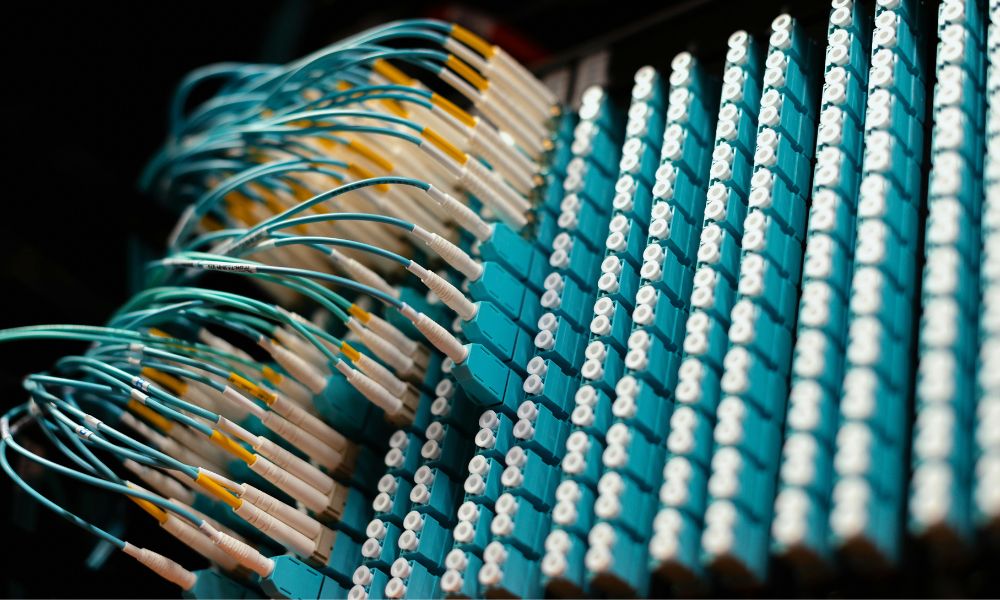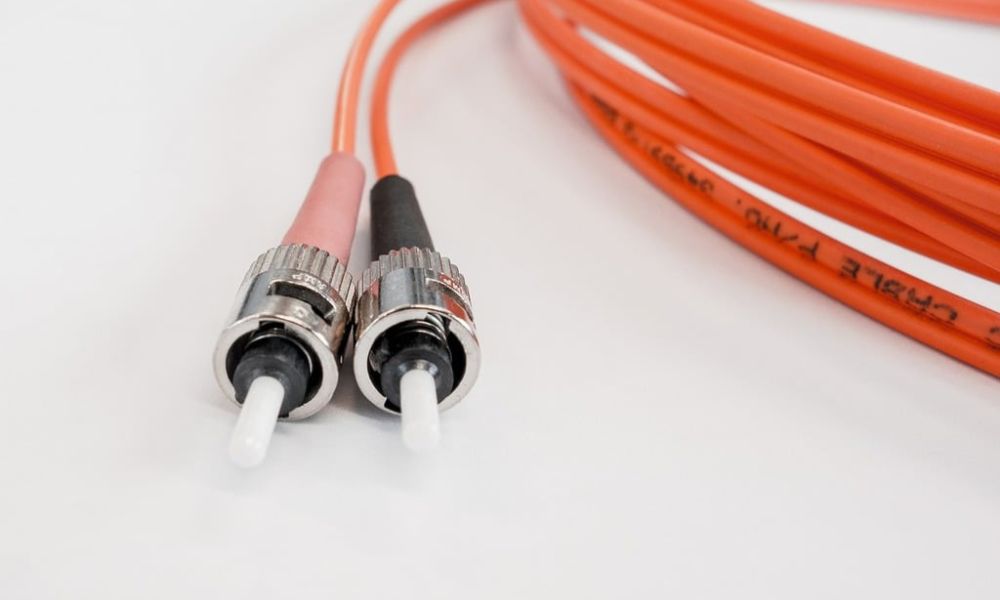Fiber optic cable isn’t just the future of data – it’s the present. We’ve seen firsthand how businesses and IT planners are shifting to fiber to meet modern demands for speed, reliability, and bandwidth. But let’s be honest: trying to pin down the actual cost of fiber optic cable? It’s not as straightforward as people expect.
You’re not just paying for the cable. You’re paying for the work behind the scenes, the installation challenges, and sometimes, the surprises nobody warns you about – until you’re knee-deep in permits or hard rock soil. The team at Athena Technology Solutions is here to break it all down, drawing from our real-world experience helping everyone from small shops to sprawling campuses get connected.
Key Takeaways
- Fiber optic cable costs vary widely – from $0.09 to $1.52 per foot.
- Installation can be more expensive than the cable itself, especially with site challenges.
- Choosing between single-mode and multi-mode fiber depends on distance, data needs, and future growth plans.
- Outdoor-rated fiber is pricier but essential for durability against weather, rodents, and UV exposure.
- Future-proofing your network – like running extra strands or conduit – can save big money later.
- Athena Technology Solutions helps clients navigate every step – from planning and quoting to installation – so you don’t get blindsided by hidden costs.
What You’re Paying Per Foot (and Why It Varies So Much)
Fiber optic cable pricing ranges from $0.09 to $1.52 per foot – and trust us, there’s a story behind that number. A lot of stories, actually.
Some of the key factors we see shaping the cost include:
- Cable Type – Single-mode cable tends to be pricier than multi-mode. But if you’re running long distances or planning high-capacity data traffic, it might be worth every penny.
- Build Quality – Think of this like shoes: cheap ones might get you through a season, but premium quality lasts. Higher-grade sheathing, water-blocking materials, or armored cable can drive up the cost—but may save your budget down the line.
- Indoor vs. Outdoor Use – You can’t just run the same cable through a wet, windy backlot and a climate-controlled server room. Outdoor-rated fiber includes added protection, and that protection has a price.
So, how do you pick? Well, it depends on your environment, your goals, and how much you want to future-proof your network. We often advise clients to plan for expansion – even if it means stretching the budget a little now to avoid major overhauls later.

How Installation Costs Shape the Bigger Picture
Aerial Installations: Fast and (Usually) Less Painful
Running fiber overhead using utility poles – what we call aerial installation – typically costs between $8 and $12 per foot. It’s often quicker, and in some cases, far less disruptive. When does it make sense?
- You’re trying to connect buildings quickly and avoid digging up landscapes, sidewalks, or driveways.
- You’ve got existing poles and clearances already in place (this is a big one).
But remember: aerial isn’t always a slam dunk. If you’re in an area prone to high winds, heavy tree coverage, or strict zoning, those overhead lines can become liabilities.
Underground Installations: Clean, Secure, and Sometimes Complicated
Going underground? You’re looking at $1 to $6 per foot, depending on the depth, soil type, and access. This method makes sense when:
- You’re building in a new development with no existing infrastructure.
- Aesthetics or security are a concern – think schools, medical campuses, or upscale neighborhoods.
Of course, digging comes with its own hurdles. Always do a site survey before finalizing your installation budget.
The Hidden Levers That Drive Up Installation Costs
What else adds to the price tag? Here’s what we always ask before we quote a job:
- Where’s the job located? Urban areas with dense regulation tend to be pricier.
- How many fiber strands do you need? More strands = more splicing, testing, and labor.
- What permits are required? Permitting delays are real – and expensive.
- What equipment will we need? Trenching machines, boring rigs, or even just traffic control can shift the total cost fast.
It’s never just about feet and meters. It’s about people, rules, and machines. We help our clients navigate those complexities every day.
Future-Proofing Pays Off
If we had a nickel for every time someone came back saying, “I wish we’d installed more capacity when we had the chance,” we’d have… well, a lot of nickels.
Why It’s Smarter to Go Big Now
Here’s the thing: when you’re already trenching, pulling conduit, or coordinating with your local city inspector (fun times), adding a few extra strands of fiber or running an oversized conduit isn’t going to break the bank. But not doing it? That can get expensive – fast.
One of our manufacturing clients doubled their fiber strand count at install for a modest cost bump. Five years later, they expanded their facility. No trenching, no downtime, no drama. Planning ahead paid off – in a big way.
The Hidden Cost of Doing It Twice
Trenching is brutal. It’s disruptive, pricey, and slow. In a perfect world, you’d only have to do it once. But in the real world? Things grow, shift, scale, evolve. So if you’re laying cable now, consider this your future self’s thank-you note: install a little extra. A few bucks more now beats tens of thousands later when you’re slicing through asphalt and dodging underground power lines.

Tough Environments Make Things Pricier
Now let’s talk terrain, because where you’re installing matters – a lot.
Rocky Soil and City Streets
Got rocky ground? Great for foundations. Terrible for trenching. Your backhoe operator will curse the day, and your budget will feel the heat.
On the other hand, installing in a busy downtown area? That’s a whole different challenge. Permits, traffic control, and avoiding a spaghetti mess of underground utilities? That’s a delicate dance. And yes, the price climbs accordingly.
Trenching Isn’t Always Just Digging
In some cases, trenching means cutting through concrete, boring under streets, or complying with city codes that require a fiber run to be encased in concrete. (Yes, really.) Each step adds layers of complexity – and cost. Bottom line? The harder the environment, the steeper the bill.
Choosing Between Single-Mode and Multi-Mode Fiber
Here’s where people get tripped up. They hear “fiber is fiber,” but it’s not that simple. There’s more than one kind, and choosing the wrong one can cost you – either upfront or down the road.
What Sets Them Apart
Single-mode fiber is sleek, efficient, and built for the long haul – literally. It’s ideal when you’re connecting buildings across a campus or sending data across large facilities.
Multi-mode is the workhorse of the short-distance world. Perfect for offices, server rooms, and most indoor areas.
Which Costs More?
Single-mode typically runs a little pricier – both in terms of cable and the laser equipment it needs. Multi-mode is cheaper, but it has limits.
So Which One’s Right?
If you’re wiring a hospital or sprawling school campus, go single-mode and don’t look back. But if you’re outfitting a 10,000 sq ft office? Multi-mode will probably do just fine – unless you’re planning for big growth or serious data needs.
Indoor vs. Outdoor Fiber: It’s Not Just About Weather
This one seems obvious, but it trips people up more than you’d think. Indoor and outdoor fiber may look similar on the spool, but they’re worlds apart under the surface.
Built for the Battle
Outdoor fiber is armored. It’s designed to handle the sun, rain, snow, rodents, and even the occasional backhoe mishap. Indoor fiber? Not so much. It’s lighter, more flexible, and – let’s be honest – not ready for battle.
Why the Price Gap?
That extra protection doesn’t come free. Waterproofing, UV resistance, and extra sheathing drive up the cost of outdoor-rated cable. But if your cable’s going to live outside, skipping those features is like going camping in your socks.

Get A Quote From Athena Technology Solutions
Here’s where things go from theoretical to practical. We can throw out ballpark figures all day, but until someone walks your site, reviews your floor plan, and understands your needs – it’s just guesswork.
What You’ll Want to Share
If you’re ready to get a quote, here’s what to prep:
- Total cable length – Approximate is fine, but the more accurate, the better.
- Type of cable – Single-mode or multi-mode? Indoor or outdoor?
- Installation method – Will it be buried, pulled through conduit, or strung on poles?
- Timeline – Are we talking “as soon as possible” or “sometime next quarter”?
This info helps us build a realistic, customized estimate – not just a copy-paste from another job. If you are looking to upgrade your business with fiber optics cabling, contact our team at Athena Technology Solutions and we’ll work with you from initial project design and quote all the way through installation.
Understanding the Real Cost of Fiber Optic Cable
So – how much does fiber optic cable cost? Honestly, it’s about more than feet of cable and man-hours. You’re paying for peace of mind. Flexibility. A connection you won’t have to revisit every time your company grows. Plan smart, build in room to expand, and trust professionals who’ve seen what can go wrong. In the end, fiber optic cable isn’t just a line in your budget – it’s the backbone of your future. Contact us at Athena Technology Solutions to get your project started.



